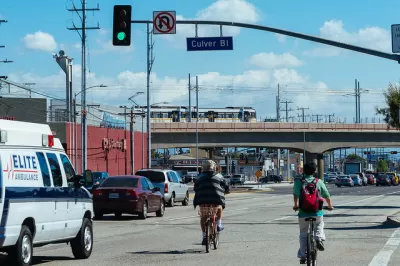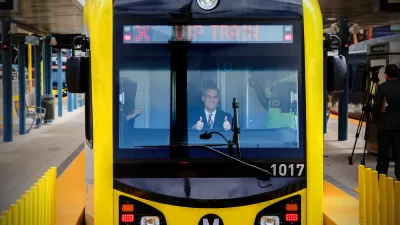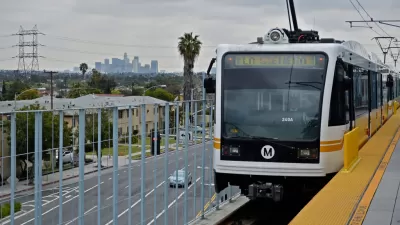Facing explosive development interest around its Metro station, the small city of Culver on L.A.’s Westside is taking steps to shape its mobility future.

Over the next four years, the five-square-mile city of Culver is expecting ten new developments focused around its Metro Expo Line station to bring 30,000 new daily trips to its streets. In anticipation of those impacts, the Los Angeles-area city has elected to craft, not just a congestion management plan, but a comprehensive vision for mobility and growth that will eventually fold into a general plan update. In The Planning Report, Culver City Vice Mayor Thomas Small and consultant Craig Nelson unpack the Transit Oriented Development Visioning Plan.
Small explains:
Our solution in Culver City is not to try to stop development, but to work with it, and to create a multimodal mobility system that will enable all these people to get around. We need a mobility system that will work with development.
Culver is just one small piece of a patchwork of more than 30 transit networks in Los Angeles County. To create a "complete journey" for riders, the plan will have to find a way to make the transition between infrastructure systems feel seamless.
Creating an easy, comfortable experience is a core component of the plan, which relies heavily on detailed community outreach. That's important in part because transit ridership is falling throughout L.A. County as well as nationwide. Nelson explains:
I’m striving to help transit agencies in the US think beyond a new app, a new website, or new sensors across the network. You need to speak to your users. You need to understand why they don’t use the bus—why it’s uncomfortable for them to use the bus—and think about how good design, good strategy, and good policy can be used to deliver a more accessible and better-to-use transit network.
FULL STORY: Culver City Hosts Mobility Visioning Process Involving Stakeholders, Architects & Planners

Alabama: Trump Terminates Settlements for Black Communities Harmed By Raw Sewage
Trump deemed the landmark civil rights agreement “illegal DEI and environmental justice policy.”

Planetizen Federal Action Tracker
A weekly monitor of how Trump’s orders and actions are impacting planners and planning in America.

The 120 Year Old Tiny Home Villages That Sheltered San Francisco’s Earthquake Refugees
More than a century ago, San Francisco mobilized to house thousands of residents displaced by the 1906 earthquake. Could their strategy offer a model for the present?

In Both Crashes and Crime, Public Transportation is Far Safer than Driving
Contrary to popular assumptions, public transportation has far lower crash and crime rates than automobile travel. For safer communities, improve and encourage transit travel.

Report: Zoning Reforms Should Complement Nashville’s Ambitious Transit Plan
Without reform, restrictive zoning codes will limit the impact of the city’s planned transit expansion and could exclude some of the residents who depend on transit the most.

Judge Orders Release of Frozen IRA, IIJA Funding
The decision is a victory for environmental groups who charged that freezing funds for critical infrastructure and disaster response programs caused “real and irreparable harm” to communities.
Urban Design for Planners 1: Software Tools
This six-course series explores essential urban design concepts using open source software and equips planners with the tools they need to participate fully in the urban design process.
Planning for Universal Design
Learn the tools for implementing Universal Design in planning regulations.
Clanton & Associates, Inc.
Jessamine County Fiscal Court
Institute for Housing and Urban Development Studies (IHS)
City of Grandview
Harvard GSD Executive Education
Toledo-Lucas County Plan Commissions
Salt Lake City
NYU Wagner Graduate School of Public Service




























